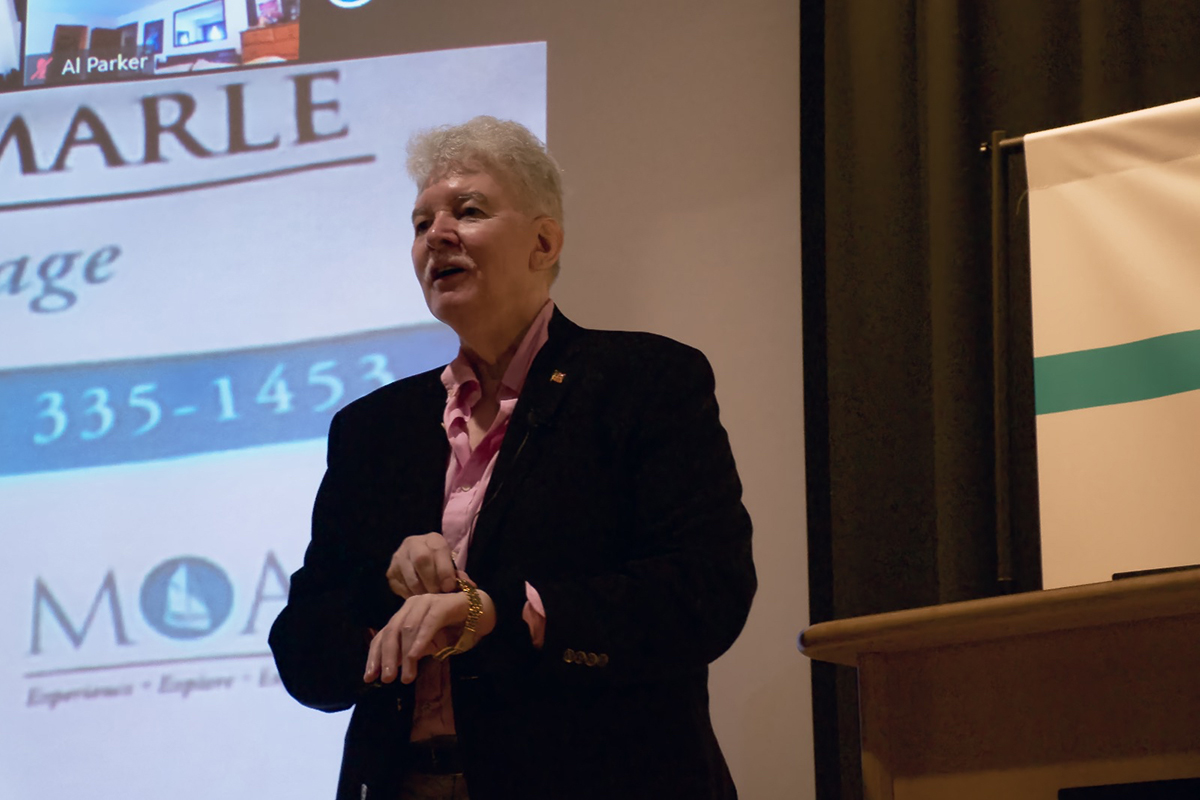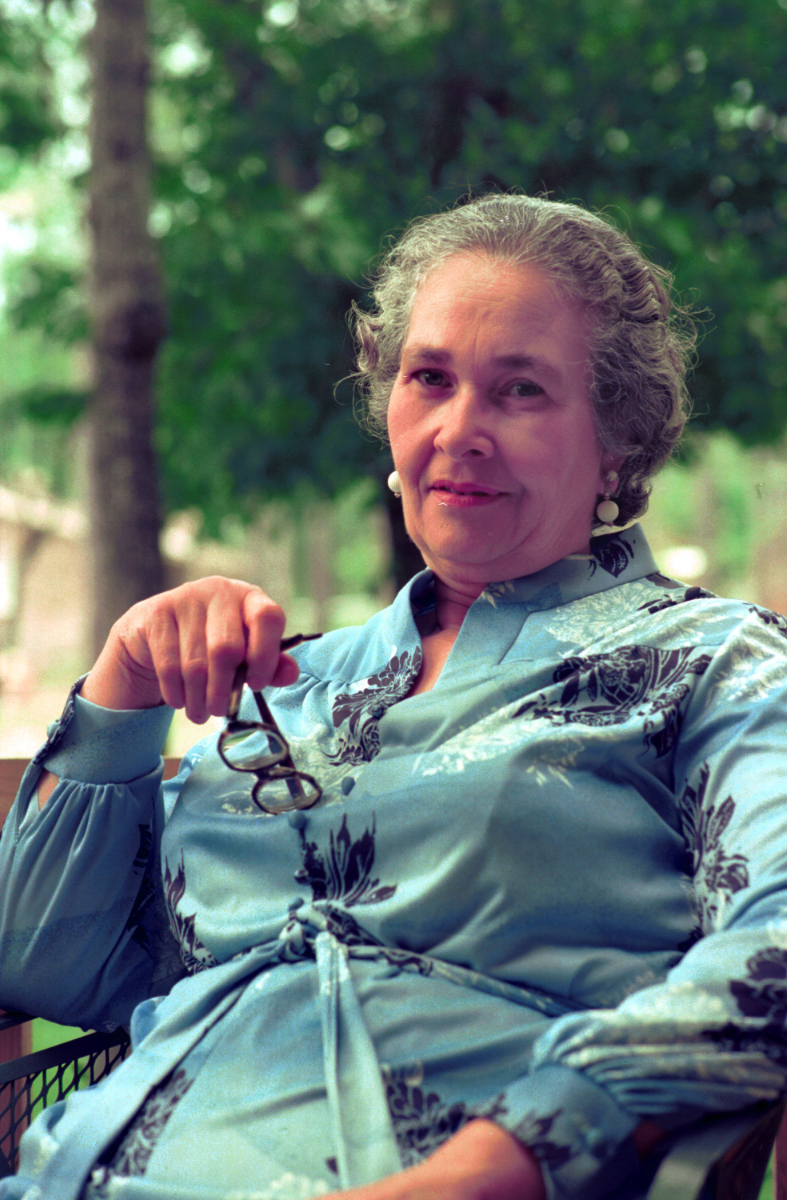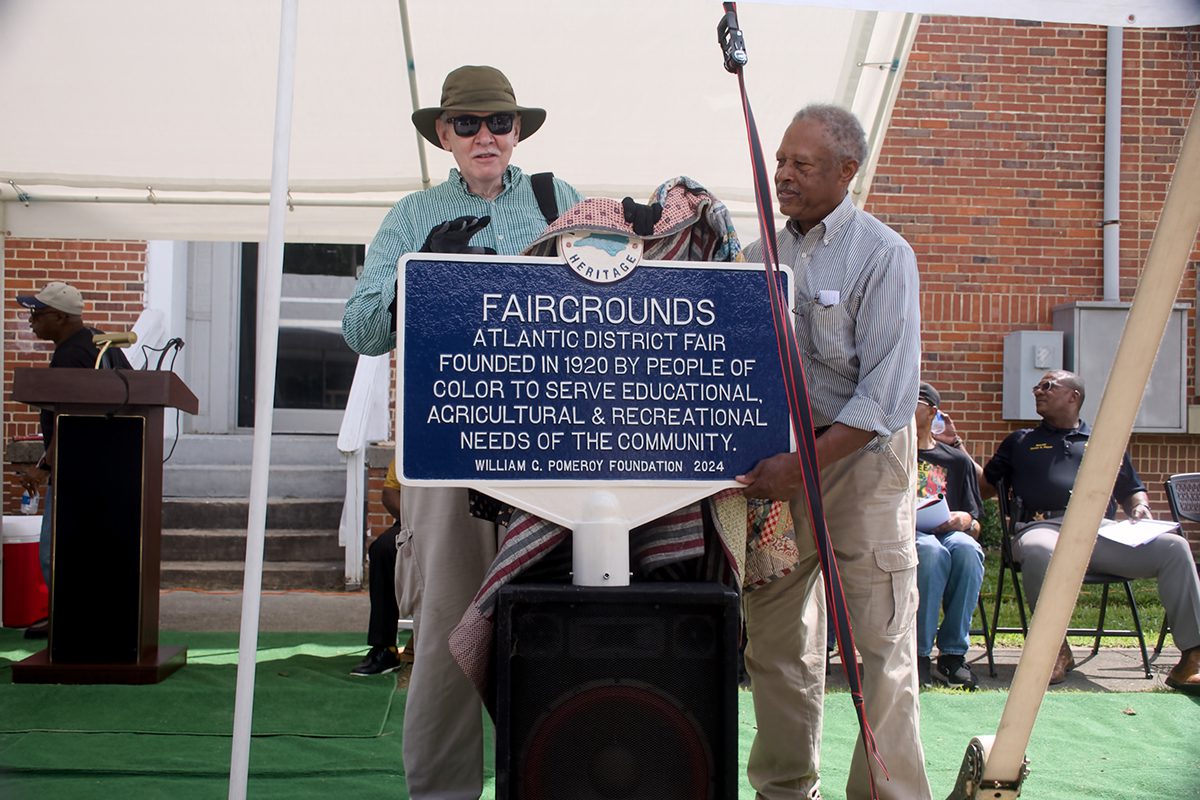
This story has been updated to correct William Weaver’s nationality.
Marvin Tupper Jones has deep roots in his native Hertford County, but part of his heritage is what some historians have described as lost.
Supporter Spotlight
Jones is the executive director of Chowan Discovery, a Hertford County nonprofit working to tell the history and heritage of the multiracial communities of northeastern North Carolina.
Jones shared the story of his family during a talk Aug. 17 at the Museum of the Albemarle in Elizabeth City, putting his ancestors’ stories in the context of the nation’s history. Not necessarily the wars, battles and great events, although there was plenty of that, rather, his narrative showed how interwoven his family’s history is in the American fabric.
On his father’s side, Jones is descended from William Weaver, an East Indian man who lived in India before coming to North America. Arriving in 1690, he was the father of biracial children, none of whom were enslaved.
But on his mother’s side of the family, the history goes back even further and is traced to the earliest inhabitants of northeastern North Carolina, a culture that had “disappeared.”
“I’d like to tell you a story about a long period of time here in the Albemarle and that is my family from before the Lost Colony up to now,” Jones said as he began his lecture.
Supporter Spotlight
His ancestors were from the Chowanoke of the Albemarle region. The Chowanoke, who lived along the banks of the Chowan River, were described by Ralph Lane, military captain of Sir Walter Raleigh’s first exploratory mission to the Albemarle, as the most powerful tribe in the area, with some 19 towns and 700 warriors ready for battle.
In 1585 Lane, in an action that would presage the violence against the region’s tribal nations, seized the Chowanoke king and questioned him for days, Jones explained.
“He seized the Chowanoke leader, Menatonon, and interrogated him for three days, departing with Mematonon’s son as a hostage,” he said.
Jones traces his family’s links to the Chowanoke to John Robins. There is no known documentation of Robins’ birthdate, but it’s generally listed around 1665. The family name was eventually spelled as Robbins.
Robins lived in a turbulent period. The Chowanoke had entered into a treaty in 1663 with the lords proprietors who controlled at the time what would become North Carolina. By the terms of the treaty, according to the Naive American Project, the tribe, “submitted themselves to the Crown of England under the Dominion of the Lord Proprietors.”
But as the Colony’s population grew, treaty violations became more numerous, leading to a largely forgotten 17th-century conflict.
“Because of encroachments in 1676 between the Chowan River and Dismal Swamp, there was the Chowan River War, which is almost never mentioned in North Carolina histories. It was the first Colonial war against Indians. It was sustained. It covered a period of about two years,” Jones said.
The Chowanoke lost the war and a new treaty relegated them to 12 square miles along Bennetts Creek, a Gates County tributary to the Chowan River. Over time much of the original tract was sold, probably to satisfy taxes and debts.
“Now we get into my mother’s part of the family,” Jones said. “John Robbins, born say 1700, was one of the Chowan County Indians who sold some of their land on Bennetts Creek.”

The sale of land continually shrank the size of what was probably the first North American Native American reservation. By the 1750s, almost all the land had been sold.
Jones cites Moravian missionary August Gottlieb Spangenberg who wrote in 1752, “the tribe of the Chowans is reduced to a few families.” Going on to say that their condition was “deplorable” and “their land had been taken away from them.”
But Jones clarified that if the land that was once their native soil was no longer theirs, the Chowan people still saw themselves as unique.
“As a collective community when some disappear from the historical record … a lost tribe, the Chowanoke blended with others on the margins of Colonial society,” he said, citing Michael Leroy Oberg from his 2009 book, “The Head in Edward Nugent’s Hand.”
“Hey, I’m here,” Jones said to that, adding that the blending with others on the margins of society was, “not true at all.”
He cites research done by Forest Hazel, published in North Carolina Archeology, that showed the Chowanoke dispersed throughout northeastern North Carolina.
“You had Chowanokes who moved as far east as Currituck County, of course Hertford County and Bertie County, but still you have a core who stayed in Gates,” he said.
As Jones reviewed his family’s history, even if the Chowanoke tribe was no longer recognized, the descendants of the tribe were creating their own community in Hertford County.
In 1790, James Robbins, probably the grandson or great-grandson of John Robins, with other members of his family, sold the last remaining 400 acres of the original tract granted to the Chowanoke people in 1724.
At that time, any sale of land involving nonwhite citizens had to be approved by the state legislature and in approving the sale, Jones quoted the legislature as noting the sale was, “Leaving a parcel of Indian women which is mixed with Negroes, and there is now several freemen or women of Mixed blood as aforesaid has descended from said Indians and they behave themselves in the late contest with Great Britain as good and faithful soldiers.”
James Robbins had, in fact, been a “good and faithful soldier.” Among the documents Jones found in researching his family history was a 1782 pay voucher for Robbins’ service in the Revolutionary War.
The James Robbins household also is found in the 1790 census. It was a large household, listed as having 15 free people of color and a white woman. The white woman is listed in the 1800 census, also. The woman is not named; at that time only the male head of a household was listed in census records. However, Jones points out, the couple were probably married.
“I have a white great-great-great-grandmother,” he said.
The designation as a free people of color became extraordinarily important after the 1831 Nate Turner rebellion. The oldest document in his family’s personal possession is a court statement from 1831.
“It belonged to my great-great-grandfather, Noah Robins,” Jones said. “The document states: ‘Noah Robins a man of color hath made application to this court to grant him a certificate certifying that his a free man and a native of this county Gates County and in proofs being rendered to that effect, it was then and there that ordered that the Clerk of said Court give to Noah Robins a certificate certifying that he is a free man of color and is a native of said County and is entitled to all the rights and privileges of free persons of colour …’”
“This is four days after the Nat Turner Rebellion,” Jones explained. “This document was required of all free people of color in North Carolina, but many of them didn’t get it until they needed it. He needed it because of the great backlash in Virginia and North Carolina all the way to South Carolina from the Nat Turner rebellion. He needed it to save his life, his household and everything.”
Although the court document granted Robbins “all the rights and privileges of free persons of color” in antebellum North Carolina, it is unclear what those rights and privileges were. The state legislature stripped free people of color of the right to vote in 1835, one of a series of increasingly restrictive laws.
The result was that the ranks of the Union Army were filled with members of the Hertford County Robbins family.
In February 1862, the Union Navy seized control of the Chowan River, and free people of color and formerly enslaved people flocked to the Union banner. According to Jones, eight Robbins served in the Union Army. The various members of Robbins family served throughout the states in rebellion.
“(They) served in Virginia, South Carolina, Florida and Texas,” Jones said.
Sergeant major Parker David Robbins and his brother, Augustus Robbins, regimental quartermaster sergeant, went on to serve in the North Carolina legislature after the war.
But when Reconstruction ended in 1877, the hope that people of color could participate in the political process in North Carolina seemed to die. The tenuous coalition of Republican legislators combining white political leaders and people of color elected to state office was shattered. Physical intimidation and laws made it ever more difficult for people of color to vote.
Yet, nearly a century after the end of Reconstruction, Jones’ mother served as a Hertford County elections official.
“Noah Robbins lost the right to vote in 1835,” Jones said and pointed to an image he posted on the screen in the lecture hall. “This is his great-granddaughter, my mother Pearlene (Robbins) Jones, who was an elections judge in 1972.”







